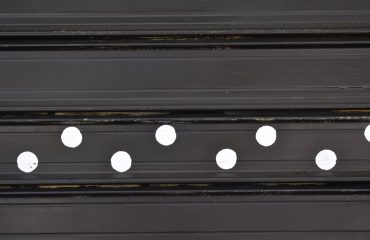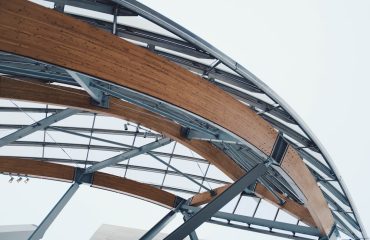Modern architecture demands innovative solutions that balance aesthetics, functionality, and sustainability. In this pursuit, IPE beams have emerged as a key player, offering a unique blend of strength, flexibility, and visual appeal. This comprehensive guide delves into the world of IPE beams, exploring their applications, advantages, and the role they play in shaping contemporary structures.
Understanding IPE Steel Beams: Properties and Characteristics
IPE beams, or Parallel Flange I-beams, are hot-rolled steel sections characterized by their parallel flanges and a web of varying depth. This design maximizes strength-to-weight ratio, a crucial factor in modern construction where minimizing material usage while maintaining structural integrity is paramount. The “IPE” designation is a European standard, but these beams are widely available and utilized globally. Their properties, including high yield strength, excellent ductility (ability to deform under stress before fracturing), and consistent dimensions, make them ideal for a wide range of architectural applications. The precise dimensions of IPE beams are standardized, simplifying design and fabrication processes. This standardization also contributes to their cost-effectiveness and ease of procurement.
IPE Beams in Modern Architectural Applications: From Residential to Commercial
The versatility of IPE beams is evident in their diverse applications across various architectural projects. In residential settings, they are frequently used to create striking open-plan spaces by supporting large spans without the need for intrusive columns. This allows for greater flexibility in interior design and maximizes natural light penetration. In commercial projects, IPE beams are integral to the construction of large industrial buildings, warehouses, and even aesthetically driven structures like museums and galleries. Their ability to support heavy loads and withstand significant stress makes them suitable for supporting multi-story structures and complex roofing systems. The clean lines and uniform dimensions of IPE beams also lend themselves well to exposed structural designs, becoming a prominent feature of the overall aesthetic.
Design Considerations and Engineering Specifications for IPE Beams
While IPE beams offer significant advantages, careful consideration of design specifications is crucial for successful implementation. Engineers must account for factors such as the beam’s span, load capacity (both dead and live loads), and the overall structural integrity of the building. Software programs specializing in structural analysis are commonly used to optimize beam selection and ensure compliance with relevant building codes and safety regulations. Proper detailing of connections is also critical; ensuring the beams are securely fastened to other structural elements is essential for the overall stability of the structure. The selection of appropriate connections will influence the overall aesthetic, as well as ensuring the structural integrity of the building.
Sustainability and Environmental Impact of Utilizing IPE Beams
The sustainability of construction materials is increasingly important in modern architecture. While steel production has an environmental footprint, IPE beams contribute to sustainable building practices in several ways. Firstly, their high strength-to-weight ratio minimizes the amount of steel required for a given project, reducing material consumption and transportation costs. Secondly, steel is a highly recyclable material, ensuring that the embodied energy is not entirely lost at the end of the structure’s lifespan. Many modern steel mills also incorporate sustainable practices in their production processes, reducing their overall carbon footprint. The long lifespan of buildings constructed with IPE beams further enhances their sustainability, reducing the need for frequent replacements and associated material waste.
Future Trends and Innovations in IPE Beam Applications
The use of IPE beams is likely to continue evolving in response to advancements in construction technology and architectural design. Innovations in steel production are leading to the development of higher-strength, lighter-weight steel alloys, further enhancing the performance and sustainability of IPE beams. Integration with other building materials, such as composite materials, is also expected to increase, creating hybrid structural systems that combine the strengths of different materials. Furthermore, advancements in design software and fabrication techniques will streamline the design and construction process, improving efficiency and reducing costs. Expect to see IPE beams integrated into more innovative and complex architectural designs in the future, pushing the boundaries of structural possibilities.
Tags: IPE Beams, Steel Beams, Modern Architecture, Structural Engineering, Sustainable Construction




